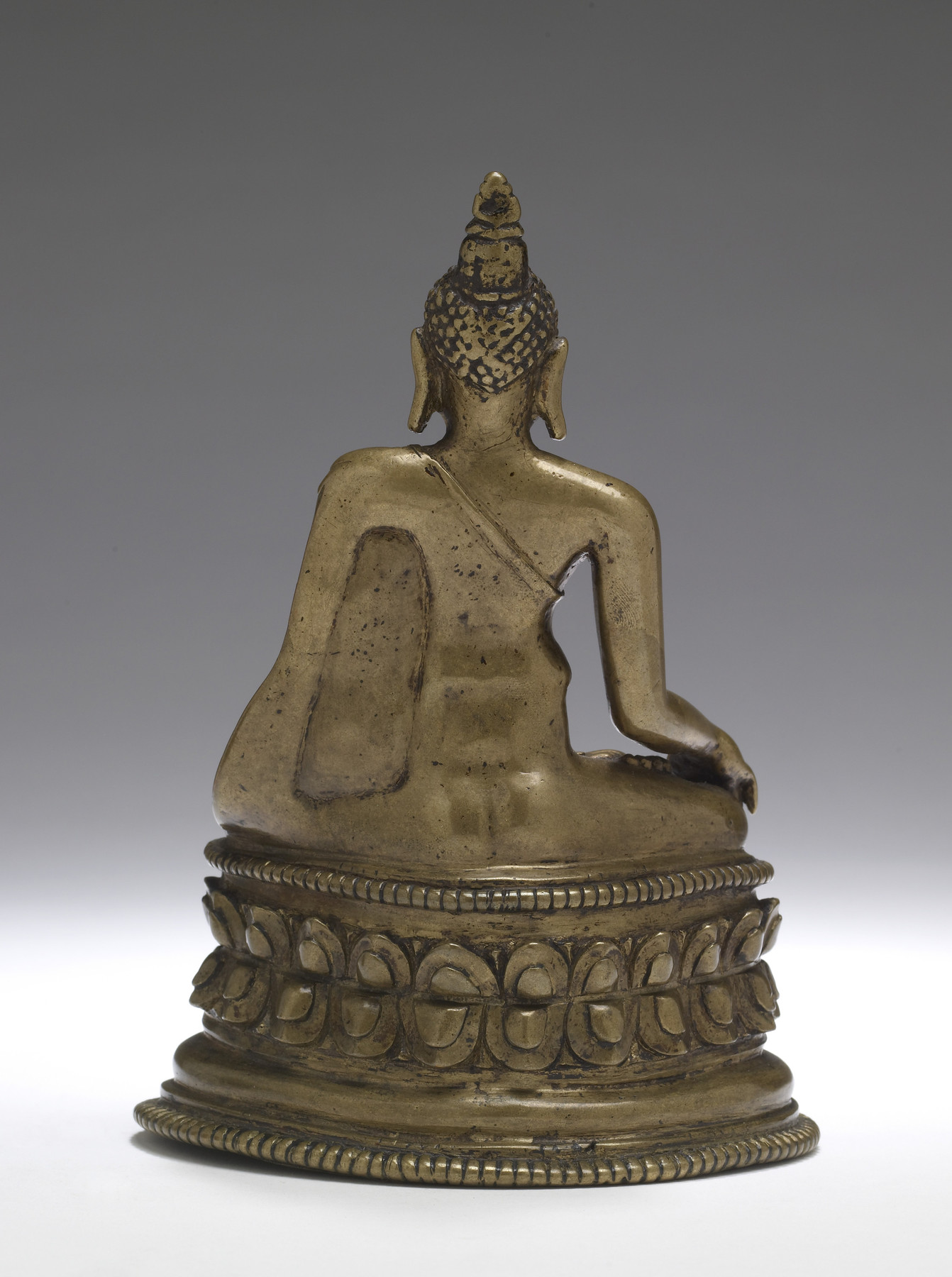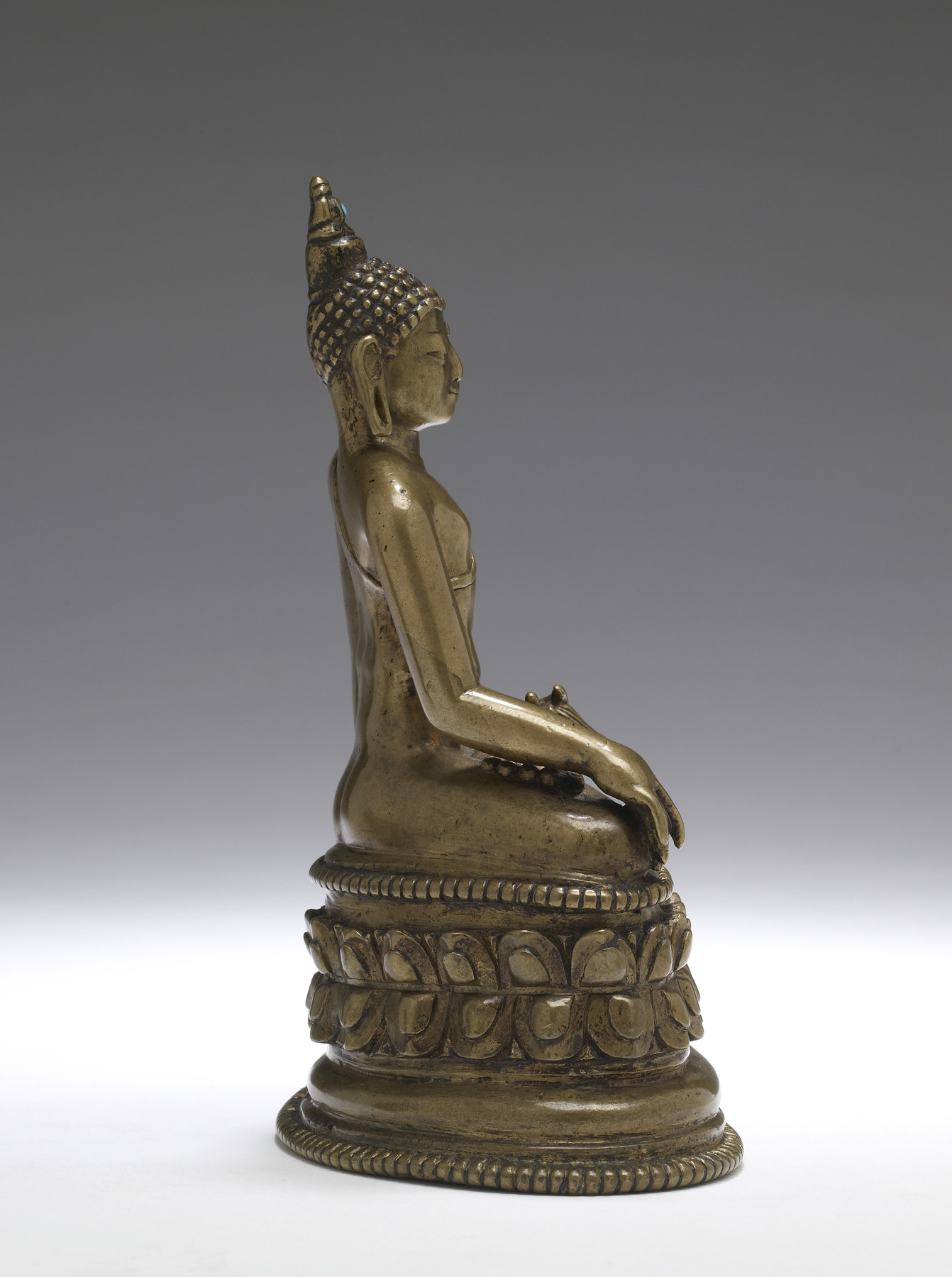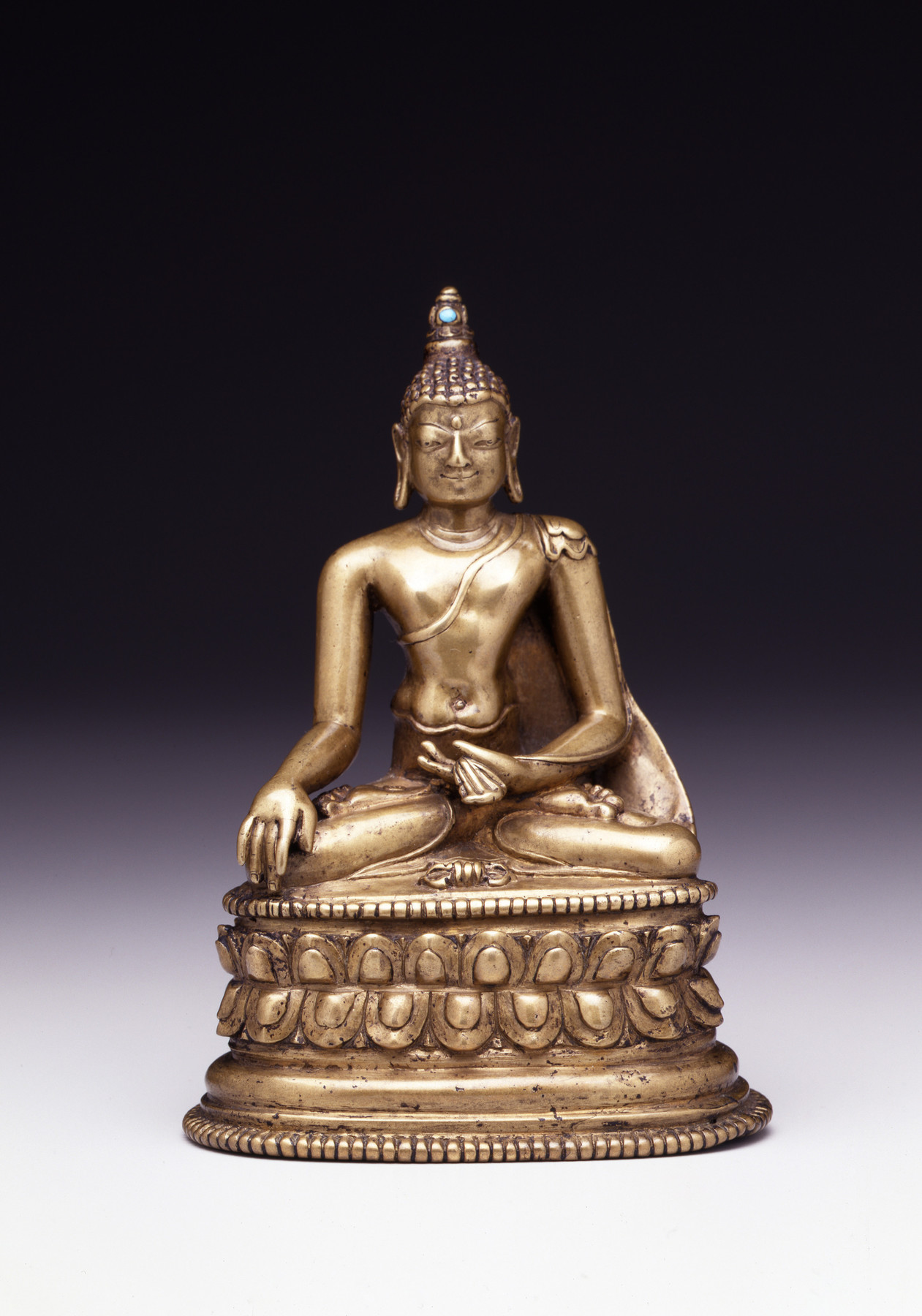Buddha Akshobhya
(India, Nepal, and Tibet)
The Buddha Akshobhya is one of five cosmic Buddhas, each of whom is associated with a particular direction, gesture, and color. Akshobhya, Buddha of the east, is recognized by the earth-touching gesture ("bhumisparsha mudra"), made by extending the right hand downward with the palm facing inward. When represented in painting, Akshobhya’s color is blue. Perhaps the turquoise inlaid into this Buddha’s "ushnisha" (the cranial protrusion that signals his heightened wisdom) recalls his blue color for some viewers and devotees. As an unpainted sculpture, it would be easy to identify this Buddha as the historical Buddha, Shakyamuni, at the time of his enlightenment, when he too touches the earth as he sits in meditation. The object on this Buddha’s pedestal, however, confirms his identity: Known as a "vajra," it is the symbol of Akshobhya, who is head of the vajra family of tantric Buddhist deities.
Provenance
Provenance (from the French provenir, 'to come from/forth') is the chronology of the ownership, custody, or location of a historical object. Learn more about provenance at the Walters.
Ulrich von Schroeder, Zurich, Switzerland; purchased by John and Berthe Ford, Baltimore, July 1994; given to Walters Art Museum, 2014.
Exhibitions
| 2001-2003 | Desire and Devotion: Art from India, Nepal, and Tibet in the John and Berthe Ford Collection. The Walters Art Museum, Baltimore; Santa Barbara Museum of Art, Santa Barbara; Albuquerque Museum, Albuquerque; Birmingham Museum of Art, Birmingham; Hong Kong Museum of Art, Hong Kong. |
Geographies
Tibet (Place of Origin)
Measurements
H: 6 1/2 x W: 4 1/2 x D: 3 in. (16.5 x 11.4 x 7.6 cm)
Credit Line
Gift of John and Berthe Ford, 2014
Accession Number
In libraries, galleries, museums, and archives, an accession number is a unique identifier assigned to each object in the collection.
In libraries, galleries, museums, and archives, an accession number is a unique identifier assigned to each object in the collection.
54.3094














